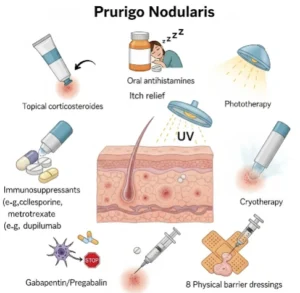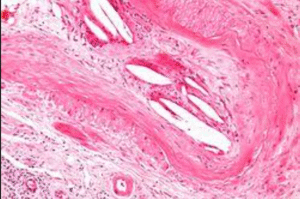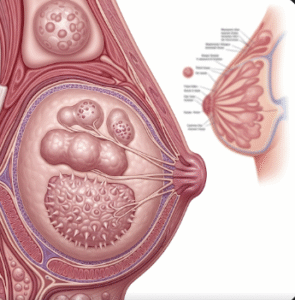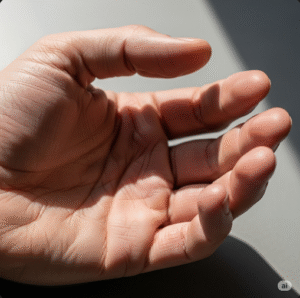Overview
Obstructive Sleep Apnea (OSA) is a common and serious sleep disorder where the upper airway becomes repeatedly blocked during sleep, causing breathing to stop for short periods. These pauses in breathing—called apneas—disrupt the normal sleep cycle and reduce oxygen levels in the blood. OSA affects both adults and children, but is more common in middle-aged and overweight individuals.
Untreated OSA can lead to high blood pressure, heart disease, diabetes, daytime fatigue, and increased risk of accidents. Fortunately, it is a treatable condition, especially with early diagnosis and proper management.
What is Obstructive Sleep Apnea?
OSA occurs when the throat muscles relax excessively during sleep, leading to partial or complete blockage of the airway. This results in:
- Interrupted breathing (often for 10–30 seconds or longer)
- Snoring
- Sudden gasping or choking
- Fragmented sleep with frequent awakenings
The brain senses low oxygen and briefly wakes the person up to reopen the airway—often without full awareness. These repeated interruptions prevent deep, restful sleep.
Symptoms
Common signs and symptoms of OSA include:
- Loud, chronic snoring
- Episodes of breathing cessation during sleep (witnessed by another)
- Gasping or choking during sleep
- Excessive daytime sleepiness (hypersomnia)
- Morning headaches
- Difficulty concentrating or memory issues
- Irritability or mood swings
- Dry mouth or sore throat upon waking
- Frequent urination at night (nocturia)
In children, OSA may present with restlessness, poor academic performance, bedwetting, or behavioral issues.
Causes
OSA is typically caused by airway obstruction during sleep. Common causes include:
- Obesity (fat deposits narrow the airway)
- Large tonsils or adenoids (especially in children)
- Short or thick neck
- Nasal congestion or anatomical blockages
- Alcohol or sedative use before bed
- Hypothyroidism or acromegaly
- Structural features, such as a recessed chin or enlarged tongue
In most cases, muscle relaxation during sleep leads to airway collapse in vulnerable individuals.
Risk Factors
Risk factors for OSA include:
- Obesity (BMI ≥ 30)
- Male gender
- Older age (especially 40+)
- Family history of sleep apnea
- Smoking or alcohol use
- Narrow airway or jaw structure
- Postmenopausal women
- Chronic nasal congestion
- Certain medical conditions (e.g., heart failure, PCOS, stroke)
Men are 2–3 times more likely than women to develop OSA.
Complications
If untreated, OSA can lead to:
- High blood pressure (hypertension)
- Heart disease (e.g., arrhythmias, heart attack, heart failure)
- Stroke
- Type 2 diabetes
- Depression and anxiety
- Daytime fatigue and reduced alertness
- Workplace or motor vehicle accidents
- Complications during surgery or anesthesia
- Cognitive decline over time
In children, untreated OSA may impair growth, learning, and development.
Prevention
While not all cases are preventable, you can reduce the risk by:
- Maintaining a healthy weight
- Avoiding alcohol, smoking, and sedatives
- Treating nasal congestion or allergies
- Sleeping on your side, not your back
- Regular exercise
- Monitoring and managing chronic conditions (like diabetes or hypertension)
- Early treatment of enlarged tonsils or nasal obstruction in children
Preventive strategies are especially important for people with family history or known risk factors.
Treatment Options in Korea
South Korea offers world-class care for OSA, with sleep clinics, ENT specialists, and advanced surgical options available in major hospitals.
1. Diagnosis
- Polysomnography (Sleep Study): Gold standard, performed in a sleep lab
- Home Sleep Apnea Test (HSAT): For mild-to-moderate cases
- ENT evaluation for airway structure
- Epworth Sleepiness Scale for subjective symptoms
2. Non-Surgical Treatment
- Lifestyle modifications: Weight loss, positional therapy, avoiding alcohol
- CPAP (Continuous Positive Airway Pressure): Most effective treatment
- BiPAP or APAP for those who cannot tolerate CPAP
- Oral appliances (mandibular advancement devices) for mild cases
- Behavioral therapy for improving sleep hygiene
3. Surgical Treatment
- Uvulopalatopharyngoplasty (UPPP): Removes soft tissue from the back of the throat
- Tonsillectomy/Adenoidectomy: Especially effective in children
- Nasal surgery: Corrects deviated septum or turbinate enlargement
- Hypoglossal nerve stimulation (Inspire device)
- Maxillomandibular advancement (jaw surgery) for severe cases
4. Multidisciplinary Sleep Centers in Korea
Leading hospitals offering OSA diagnosis and treatment include:
- Samsung Medical Center – Sleep Medicine Center
- Seoul National University Hospital – Sleep Clinic
- Asan Medical Center – ENT & Pulmonology Departments
- Severance Hospital (Yonsei University) – Sleep and Breathing Center
- CHA Bundang Medical Center – Pediatric Sleep Clinic
These facilities provide:
- Multilingual services for international patients
- Custom CPAP fitting and follow-up
- State-of-the-art sleep labs
- Expert care from ENT, pulmonology, and dental sleep medicine teams













